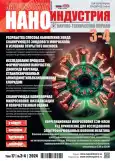Originality without privilege: comparative analysis of electroformed and standard nitrocellulose membranes in melatonin immunoassays
- Authors: Zamalutdinova S.V.1, Petrova P.A.1, Ramonova A.A.1, Bagrov D.V.1
-
Affiliations:
- Lomonosov Moscow State University, Biological Department
- Issue: Vol 17, No 3-4 (2024)
- Pages: 220-229
- Section: Nanomaterials
- URL: https://journals.eco-vector.com/1993-8578/article/view/633089
- DOI: https://doi.org/10.22184/1993-8578.2024.17.3-4.220.229
- ID: 633089
Cite item
Abstract
Electrospinning enables manufacturing of polymer membranes composed of nanofibres. These membranes find application as filters, wound coatings, and tissue engineering scaffolds. They are also considered promising substrates for immunoassays. Despite the scientific community’s keen interest in the immunoassays based on electrospun membranes, a direct comparison with membranes formed through alternative technologies has not been conducted to date. In this study, we performed such a comparison and demonstrated that the detection of melatonin via enzyme-linked immunosorbent assay (ELISA) is virtually identical on the electrospun membranes and the conventional commercially available membranes.
Full Text
About the authors
S. V. Zamalutdinova
Lomonosov Moscow State University, Biological Department
Author for correspondence.
Email: podgorodova.sofya@yandex.ru
ORCID iD: 0009-0006-9510-1868
Junior Researcher
Russian Federation, MoscowP. A. Petrova
Lomonosov Moscow State University, Biological Department
Email: podgorodova.sofya@yandex.ru
ORCID iD: 0009-0004-7933-0594
Junior Researcher
Russian Federation, MoscowA. A. Ramonova
Lomonosov Moscow State University, Biological Department
Email: podgorodova.sofya@yandex.ru
ORCID iD: 0000-0002-3081-4721
Junior Researcher
Russian Federation, MoscowD. V. Bagrov
Lomonosov Moscow State University, Biological Department
Email: podgorodova.sofya@yandex.ru
ORCID iD: 0000-0002-6355-7282
Cand. of Sci. (Physics and Mathematics), Lead Researcher
Russian Federation, MoscowReferences
- Kim B.B., Dikova E.B., Sheller U., Dikov M.M., Gavrilova E.M., Egorov A.M. Evaluation of dissociation constants of antigen-antibody complexes by ELISA. Journal of Immunological Methods. 1990. Vol. 131(2). PP. 213–222.
- Hui L., Chen W., Najlah M. The challenges to develop antibody-conjugated nanomedicine products. Nano TransMed. 2023. Vol. 2(4). P. 100018.
- Reimhult E., Höök F. Design of Surface Modifications for Nanoscale Sensor Applications. Sensors. 2015. Vol. 15(1). PP. 1635–1675.
- Rissin D.M., Kan C.W., Campbell T.G., Howes S.C., Fournier D.R., Song L. et al. Single-molecule enzyme-linked immunosorbent assay detects serum proteins at subfemtomolar concentrations. Nat Biotechnol. 2010. Vol. 28(6). PP. 595–599.
- Pavlova E.R., Bagrov D.V., Kopitsyna M.N., Shchelokov D.A., Bonartsev A.P., Zharkova I.I. et al. Poly(hydroxybutyrate‐ co ‐hydroxyvalerate) and bovine serum albumin blend prepared by electrospinning. J of Applied Polymer Sci. 2017. Vol. 134(29). P. 45090.
- Pavlova E., Maslakova A., Prusakov K., Bagrov D. Optical sensors based on electrospun membranes principles, applications, and prospects for chemistry and biology. New J Chem. 2022. Vol. 46(18). PP. 8356–8380.
- Hosseini S., Azari P., Aeinehvand M., Rothan H., Djordjevic I., Martinez-Chapa S. et al. Intrant ELISA: A Novel Approach to Fabrication of Electrospun Fiber Mat-Assisted Biosensor Platforms and Their Integration within Standard Analytical Well Plates. Applied Sciences. 2016. Vol. 6(11). P. 336.
- Hosseini S., Azari P., Farahmand E., Gan S.N., Rothan H.A., Yusof R. et al. Polymethacrylate coated electrospun PHB fibers: An exquisite outlook for fabrication of paper-based biosensors. Biosensors and Bioelectronics. 2015. Vol. 69. PP. 257–264.
- Басманов П.И., Кириченко В.Н., Филатов Ю.Н., Юров Ю.Л. Высокоэффективная очистка газов от аэрозолей фильтрами Петрянова. М.: Наука, 2003. 272 c.
- Филатов Ю.Н. Электроформование волокнистых материалов (ЭФВ-процесс) / Под ред. Кириченко В.Н. М., 2001. 231 c.
- Hoy C.F.O., Kushiro K., Yamaoka Y., Ryo A., Takai M. Rapid multiplex microfiber-based immunoassay for anti-MERS-CoV antibody detection. Sensing and Bio-Sensing Research. 2019. Vol. 26. P. 100304.
- Ramachandran S., Singhal M., McKenzie K., Osborn J., Arjyal A., Dongol S. et al. A Rapid, Multiplexed, High-Throughput Flow-Through Membrane Immunoassay: A Convenient Alternative to ELISA. Diagnostics. 2013. Vol. 3(2). PP. 244–260.
- Петрова П.А., Замалутдинова С.В., Внукова А.А., Алексеева Д.А., Багров Д.В. Обработка нитроцеллюлозных мембран в тлеющем разряде повышает чувствительность иммуноанализа. Биофизика. 2023. Vol. 68(3). PP. 435–441.
- Nartker S., Drzal L.T. Electrospun Cellulose Nitrate Nanofibers. J Nanosci Nanotech. 2010. Vol. 10(9). PP. 5810–5813.
- Manis A.E., Bowman J.R., Bowlin G.L., Simpson D.G. Electrospun nitrocellulose and nylon: Design and fabrication of novel high performance platforms for protein blotting applications. J Biol Eng. 2007. Vol. 1(1). P. 2.
- Keaswejjareansuk W., Wang X.D. Sisson R., Liang J. Electrospinning process control for fiber-structured poly(Bisphenol A-co-Epichlorohydrin) membrane. AIMS Materials Science. 2020. Vol. 7(2). PP. 130–43.
Supplementary files








